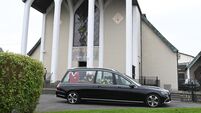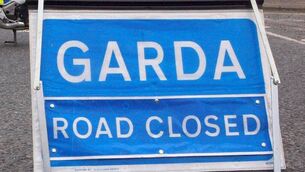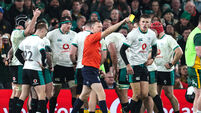Bishop to visit parishes impacted by notorious Bandon Valley massacre

The Church of Ireland Bishop of Cork, Cloyne and Ross, The Right Reverend Dr Paul Colton will make a number of pastoral visits to the Bandon Valley region to mark the murders of 14 people in 1922. Picture: Jim Coughlan
The Bishop of Cork, Cloyne, and Ross will mark the centenaries of a notorious spate of sectarian killings in West Cork with a series of pastoral visits to the region.
Church of Ireland Bishop Dr Paul Colton said he hopes to ensure that the so-called Bandon Valley massacre of April 1922, when 13 men, all Protestant, were gunned down by unidentified gunmen in just a few days, are “appropriately remembered” in the most affected parishes in the context of this Decade of Centenaries.
The men were all shot at various locations between April 26 and 28 1922, during a period of truce after the end of the War of Independence and before the outbreak of the Civil War in June of that year. Their deaths followed the killing of IRA acting commandant Michael O’Neill.
The massacre triggered a flight of an estimated 100 Protestant families from the region who no longer felt safe there.
UCC historians Andy Bielenberg and John Borgonovo have said the scale of the killings was unprecedented in county Cork.
While the motivation behind the attacks has been contested over the years, it is now widely accepted that they were sectarian killings which were carried out by unidentified IRA gunmen.
Bielenberg and Borgonovo have said that evidence strongly suggests that the killings were not sanctioned by the IRA brigade leadership, with the Cork No 3 brigade commander, Tom Hales, quickly issuing a public statement standing down his units and promising to protect ‘all citizens in this area, regardless of creed or class’, and Republican officials, including Erskine Childers, denouncing the killings.
Bishop Colton said the historiography of that period and those events in the Bandon Valley have been written about extensively and debated with different narratives, emotions and responses elicited.
“Why it happened and what the motives of people were are elusive questions. What can we know with certainty at this remove?” he wrote in this month’s Diocesan Magazine.
But at another level the facts were straightforward, he said.
“In that week, 14 people were killed: Michael O’Neill, Thomas Hornibrook, Samuel Hornibrook, Herbert Woods, James Buttimer, David Gray, Francis Fitzmaurice, Robert Howe, John Chinnery, Robert Nagle, Alexander Gerald McKinley, John Buttimer, James Greenfield, and John Bradfield,” he said.
"Attempts were made on others’ lives and they had to escape, many never to return.
“We know that in the years that followed many people from Cork, Cloyne, and Ross felt insecure in this part of the world and left.
“I am not in a position to adjudicate on the historiography of that period.
“As lead pastor in this diocese today, however, my primary duty, having consulted with the local clergy, who have listened to descendants, is to ensure that in prayer and liturgy, these people and events are appropriately remembered in the context of this Decade of Centenaries.”
And so, from April 24 he plans to visit the parishes which were caught up in those events a century ago.
A memorial space for prayer and reflection, created in St Fin Barre’s Cathedral and which from 2014 to 2018 commemorated Cork people who were killed or wounded in the First World War, has since 2019, been used to commemorate those who died in the War of Independence and the Civil War.













